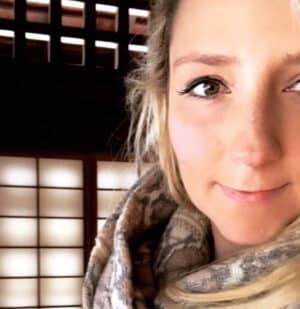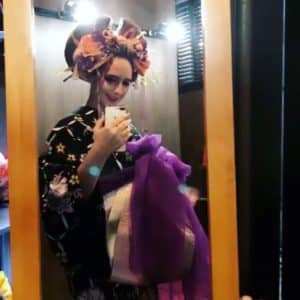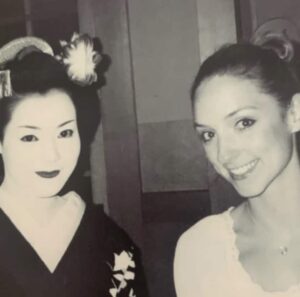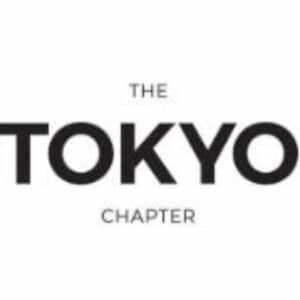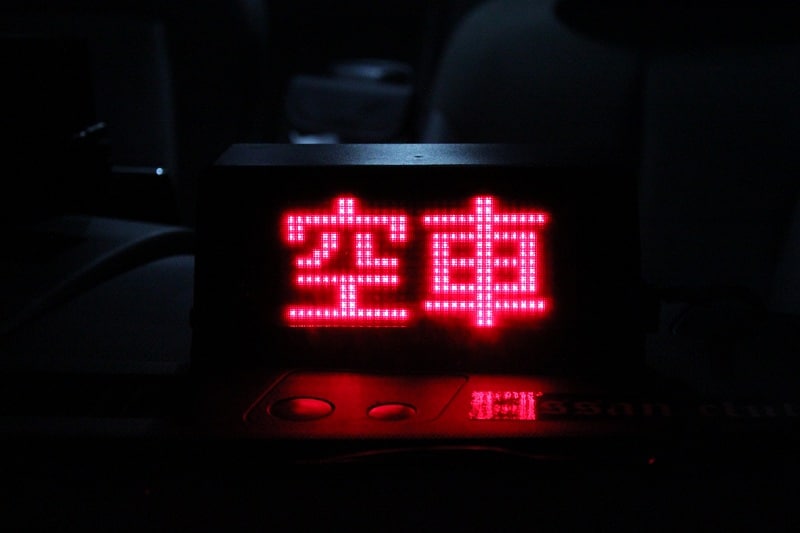
Just a little FYI : Uber is almost always more expensive than taxis in Japan and are often hard to come by. Tokyo is a big city like New York. You just hail a taxi in almost every location (unless it is a station or somewhere like the Main Street in Ginza with dedicated taxi stands.)
HOWEVER: a friend of mine shared a little tip with me recently, there is a flat rate for Uber between Haneda Airport and the city centre so that may be worth asking about.
Please note that this blog post contains affiliate links. This means that I may make a small commission if you make a purchase using one of my links – at no additional cost to you.
See here for my bossy tips on getting yourself from Haneda into Tokyo with kids.
HERE ARE A FEW TIPS ON CATCHING TAXIS AROUND TOKYO:
Use google maps to work out how much a taxi will cost and if it is worth it for you:
I do this often if the kids are tired or someone is not feeling great. I compare the time and price in a cab versus travelling by public transport. To get a cost idea – even before you are in Japan – use the UBER app and put in both destination and departure location – for example Shibuya Crossing to Tokyo Tower- then you will know how much a cab with be too , doesn’t have to be uber- just use the uber app for the estimate.
Don’t touch the magic doors
The back left door (behind the passenger seat) opens and closes like magic at a time decided by the driver. They get really upset if that door is opened by hand.
You’ll get used to it. My friend returned to Italy after living in Japan for many years and had a taxi driver swearing at her down the road as she just forgot to shut the door manually.
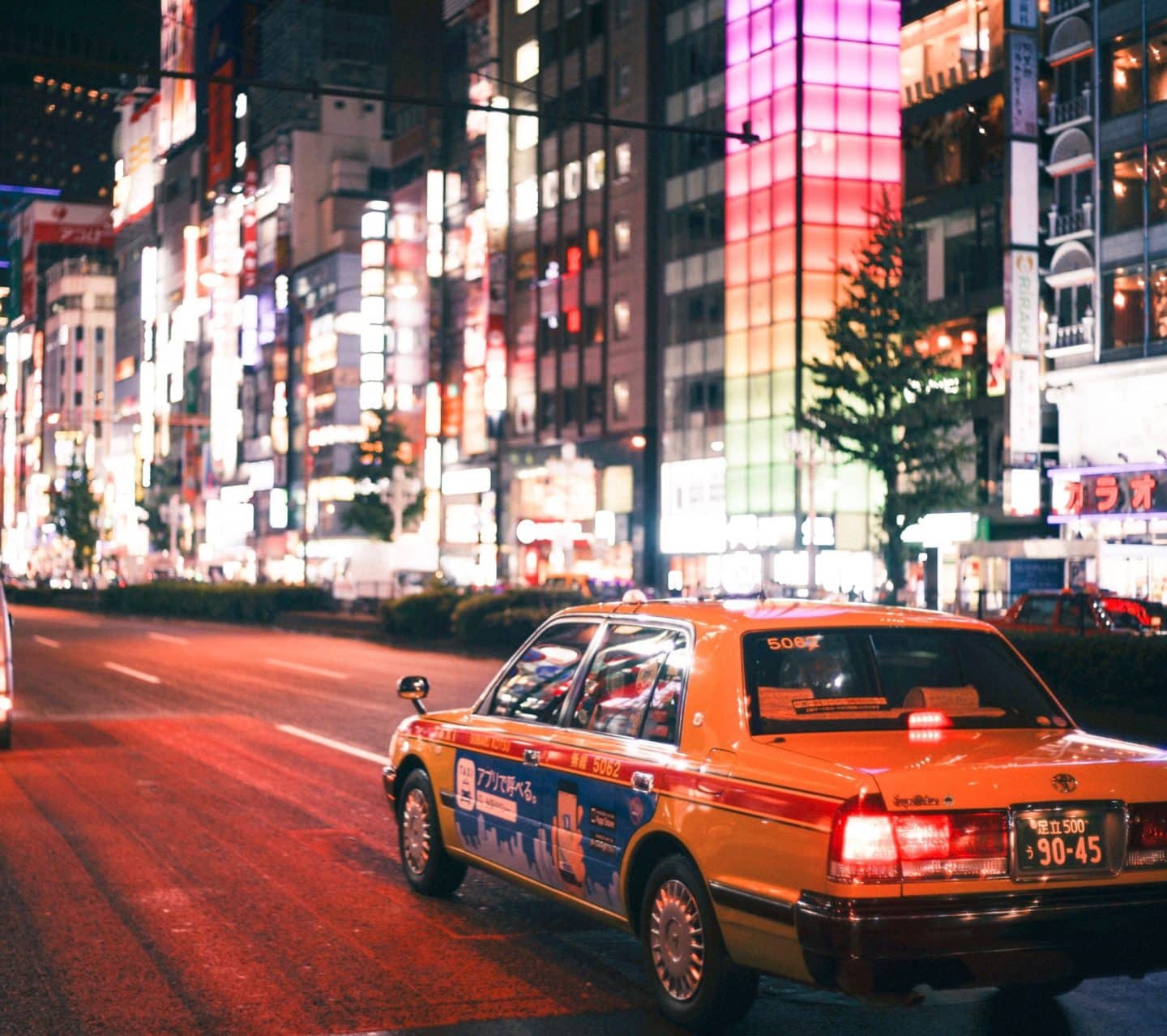
Remember that this means that the taxi is available
This means says “Kusha” and means that the taxi is available and taking passengers. It can be confusing as the characters are in red.
In order to ‘internationalize’ Tokyo for the olympics, many of the new taxis have English under this symbol but still… I’d say that 90% of them still just go with the kanji symbols in the window.
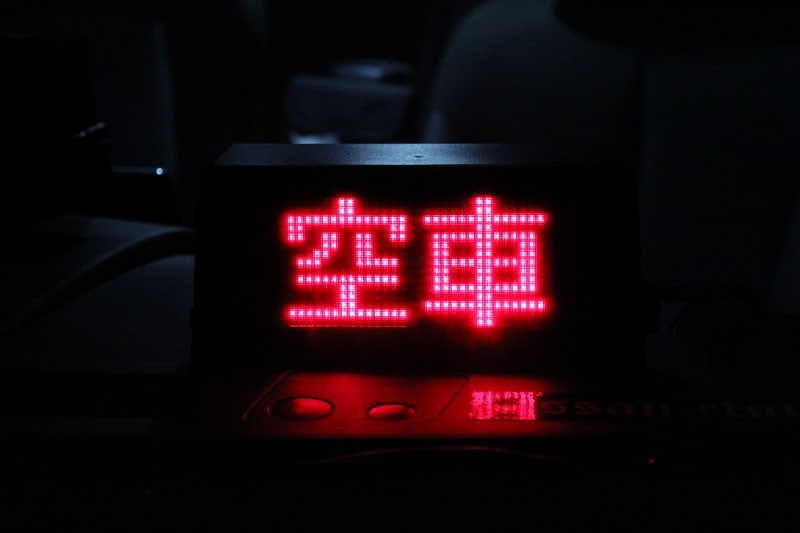
It’s easy to get cabs in the city
I rarely book a taxi. Similarly to New York and other big cities – taxis are everywhere in the city areas. If, for any reason, I struggle to find one, I walk to a hotel nearby and ‘steal’ one from their taxi line.
Some areas, like Ginza, have a rule against taxis picking up customers just anywhere on the street at night – coz it caused traffic congestion. So you’ll need to keep an eye out for taxi stand signs along the road and wait your turn.
For those who don’t like hailing cabs – I recommend using the Go app over Uber (uber ends up just being a taxi anyway). However, even more than an app you can ask your hotel to call a taxi for you if you really need a set time – such as a trip to the airport etc.
Always jump in taxis from the left hand side
That’s the side the door automatically opens and its the curbside door. Makes sense. from a safety perspective.
It’s unusual to sit in the front with the driver (unless you have more than four people)
That’s not to say that there is anything wrong with doing so but it’s not common here. (This is more for my fellow aussies who almost always sit with the driver – Onya to that. )
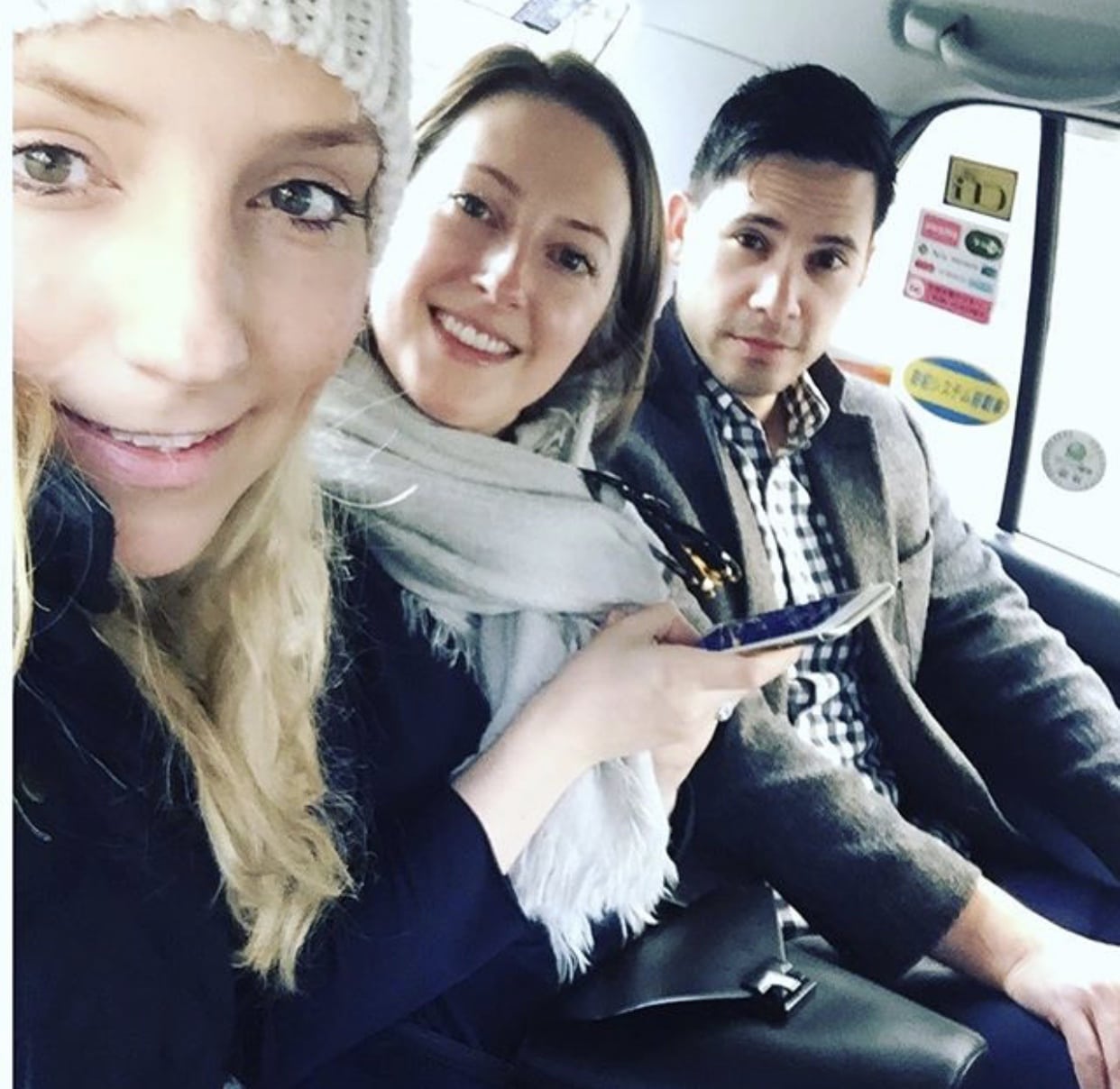
Taxis have a minimum set fare of 410 yen
The minimum fare was recently reduced to 410 yen. This covers the first 1.052 kilometres before it starts clicking up higher. I find this particularly useful if I’m just catching a cab to get somewhere close quickly and I know that I’m likely to still have a taxi fee of less than 1000 yen.
Some taxis charge extra (an additional 10% or double the minimum set fare at the start) between 10pm-5am.
You don’t have to tip
Japan isn’t a tipping culture. If you are determined to leave the driver something you can say otsuri wa irimasen (I don’t need the change.) But you may have to say it a few times in a row as you may get refused at first.

Try to keep your taxi clean and take off the shoes of little ones if their legs touch the seats
Taxi drivers take real pride in their quality of service and cleanliness of their cars. For this reason it’s unspoken etiquette to put wet umbrellas in the trunk and shoes off the seats. When I travel with my kids in cabs, I take their shoes off so they can’t get the taxi all muddy.
Service expectations from the Taxi Company’s end are high
So high, in fact, that you may get a very nervous driver – if you’re not from around these parts. They are often embarrassed by their own English proficiency level and, for that reason, can sometimes seem anxious or a bit stand-offish at first. They have a very high standard to maintain and want to make sure that can be seen through for every customer?

What do the drivers keep saying as you get out?
99% of the time, Japanese taxi drivers will ask you a sentence that contains the word wasuremono – this means that they are asking if you’ve checked that you haven’t left anything behind. Wasuremono is referring to potential lost property. (FYI: The correct answer to ‘Have you left anything behind?’ and ‘Have you checked you’ve not forgotten anything?’ would be Daijoubu desu. Arimasen.(大丈夫です。ありません)= It’s ok. I don’t have (anything left behind.)
I don’t recommend going around leaving things everywhere willy-nilly but taxi companies are also very, very good at returning items to their local police box so be sure to follow up if you do leave something valuable behind. This is a very honest place to live and I’d be surprised if you never got your belongings back again.
Almost all taxis accept cash, credit card and cards like Suica or Pasmo

What are taxi drivers in Japan writing on those clipboards?
As much as many people expect Japanese to be the height of technology – lots of Japan is still pen and paper (if you’ve worked in a Japanese corporate environment you’ll know what I’m talking about.) So many of these drivers are recording the pick up and drop off points, the fares, the number of passengers, if there was any lost property etc.
POTENTIALLY USEFUL TAXI PHRASES
(I’ve written them phonetically and then in Japanese – incase you’d prefer to show and point.)
To …… please.
……e onegaishimasu (…………へお願いします。)
How long with it take to get there?
Dore kurai kakarimasuka? (どれくらいかかりますか?)
Could you wait for me here please?
Koko de matte ite moraemasuka? (ここで待っていてもらえますか?)
Please make a left /right turn at the next intersection
Tsugi no shingo de hidari / migi ni magatte kudasai (次の信号で左/右に曲がってください)
Do children need childseats in Japanese taxis?
It’s actually not illegal to have a child or baby in a taxi without a child restraint in Japan.
For this reason, a taxi with a child seat is almost unheard of.
Some friends here have brought a car travel harness with them too. Search “rider safer travel vest” on Amazon.
Something to remember: A very basic sentence in Japanese is pretty much in the reverse order to English. For example in English you’d say “I want to go to the station” but in Japanese the order is reverse “Eki ni ikitai.” Eki is station. Ni is the particle – so your equivalent, in this case, of saying “to”. Ikitai is “want to go.” So the main point of where you want to get to first is out there right at the start. If you get the Eki part then maybe the Ni and struggle to get out the next bit…? Your taxi driver is already getting the idea! (Just an FYI, if you want to go to a specific station, put that station name at the very start. Tokyo Eki = Tokyo Station.) Same goes for airports. The word for airport is kuukou : so Narita Airport is Narita Kuukou.
Do Japanese taxis accept more than 4 passengers at a time?
Almost always no (if they do – they could be fined for breaking the law. If you need a taxi for 5 people, you are probably best to get two cabs. Van taxis aren’t impossible to find but it’s definitely harder – so I would just save yourself the stress and do two taxis or go to public transport.
Alternative, download the Didi App, Go Taxi app or you can use Uber (but this does end up being a Japanese taxi anyway but is good if you don’t want to hail a cab or you just don’t want to talk to the driver at all, I guess….). I only recommend doing this ahead of time though as you may have to wait a while for the right type of car to become available.
How can I book a private car for airport transfers or sightseeing as a family in Japan?
If someone in your group has mobility issues or you are stuck for time to see the sights in Hiroshima, Tokyo, Hokkaido or Kyoto (or you just want to see the sights at your own pace without having to worry about the logistics …) , it is possible to organise for an English speaking driver for sightseeing OR transfers- and I recommend this company TokudAw as they only use legally registered vehicles and drivers and also can provide child and baby car seats AND they can also accommodate wheelchair users. This company offer a full service transfer (providing child seats, pre-meetings with clients online so that they can match their needs and the kind of holiday they are after.) I’ve also been so impressed how helpful they have been with helping my family problem solve regarding best times to travel and what my family needs. I love that they are also only use legally registered drivers and vehicles. Prices match the other legally registered companies offering similar services BUT with a much higher end service and with options such as baby and child-seats, customizable itineraries for tours, assistance with special needs and dietary requirements, language support etc. I highly recommend. If a beautiful service like this outside of your budget, I recommend looking into the Airport Limousine Bus service to and from airports and taxis for getting around (public transport is, of course, the most cost effective way to see Japan.)
And for a bit of a giggle, check out the ‘rules’ regarding taxi drivers here.
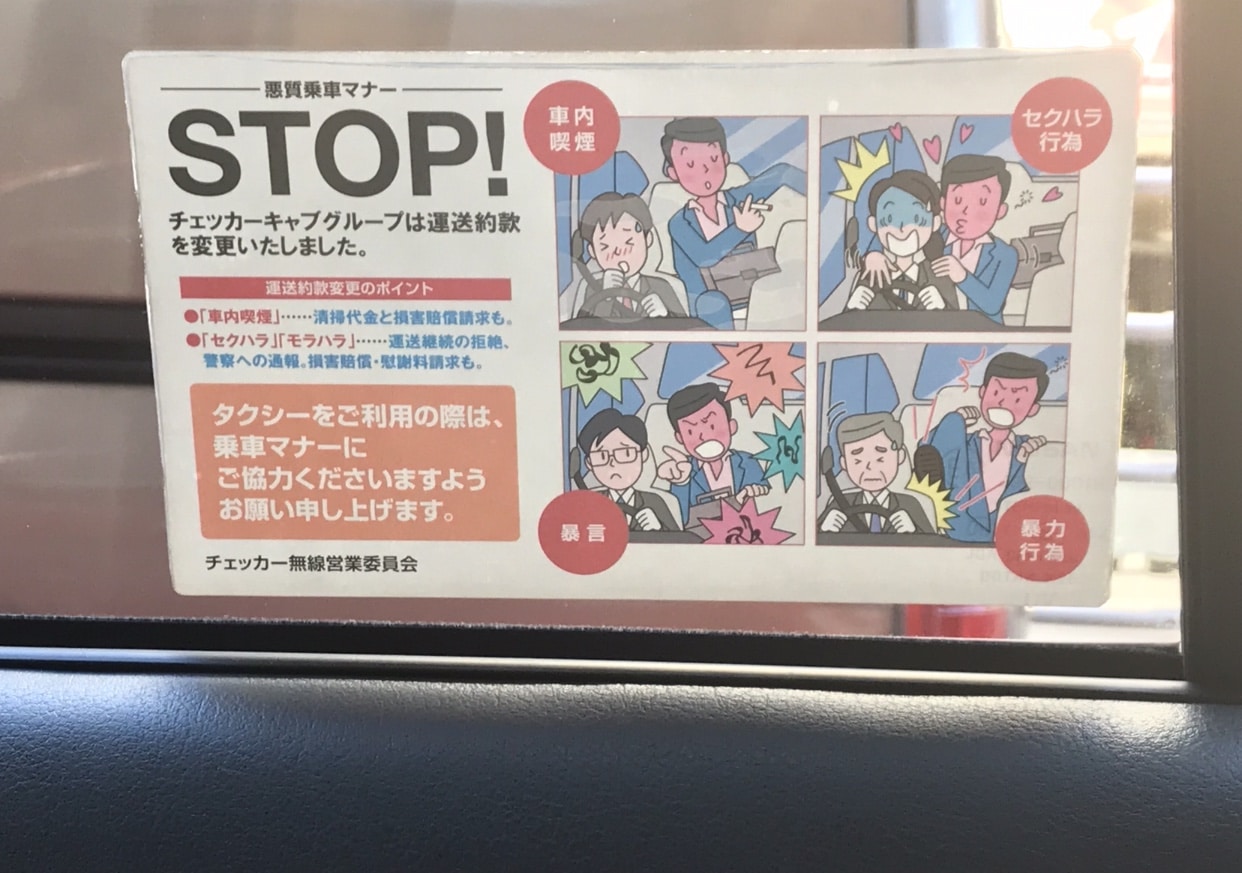
If you are interested in reading my Japanese language short cut tips see HERE.

See here for my article on peak/rush hour train times in Japan.
Please note that this blog post contains affiliate links. This means that I may make a small commission if you make a purchase using one of my links – at no additional cost to you.

